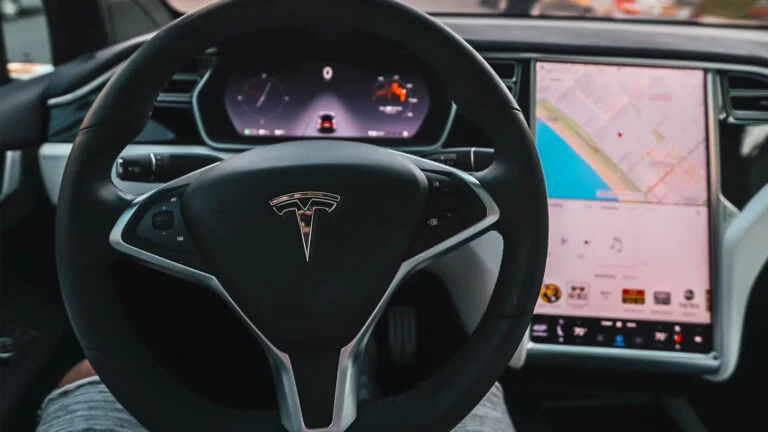Article by Tim Feran, originally posted on Columbus Underground
It’s the 21st century, so where are all the flying cars we were promised?
That question, posed with tongue firmly in cheek, was part of the Columbus Metropolitan Club’s forum on May 3, 2023 — “Electric, Autonomous & Green: The Future of Personal Transportation.”
Forum moderator Walker Evans, Co-Founder & CEO of Columbus Underground, began the discussion by citing such films as Back to the Future Part II and Blade Runner, in which flying cars are commonplace means of transportation.
Both films are set in the 21st century — 2015 and 2019. But even something more down to earth — autonomous, driverless vehicles — which Elon Musk has been predicting will be coming “next year” for the past decade, are still little more than a dream.
Today, in 2023, the best-selling vehicle in America isn’t a flying car or an autonomous vehicle. It’s the Ford F-150 pickup truck.
So what went wrong with our vision of the sci-fi future of personal mobility?
Ted Angel, Director of Aerospace Affairs at Dayton Development Coalition, pointed to the very small introduction of air taxi services that may be coming — next year — “but not in mass quantities.” The services are essentially private aircraft that people would use “almost like an Uber,” that might transport someone from Dayton to Cleveland in a much shorter amount of time than the current 3 1/2 hour drive.
That, of course, is a far cry from the science fiction vision of flying cars clogging the air overhead, much like today’s cars clog roadways in cities.
But what about driverless cars? Are they coming “next year,” as Elon Musk has been promising?
“No, not in 2024,” said Preeti Choudhary, Executive Director of DriveOhio, the initiative within the Ohio Department of Transportation that aims to organize and accelerate smart vehicle and connected vehicle projects.
“But things that are stacked on,” such as automatic braking, “can have a real impact,” she said.
“It turns out that driving is too complex for computers,” said Harvey J. Miller, Ph.D., Bob and Mary Reusche Chair in Geographic Information Science, and Professor and Director of the Department of Geography Center for Urban and Regional Analysis at The Ohio State University.
“So I don’t think it’s coming,” Miller said. “But driving assistance, as Preeti says, is coming.”
A big reason that pie-in-the-sky (or car-in-the-sky) predictions have flopped is that “we don’t need that,” Miller said. Most trips are within three miles of home, and “any trip that’s three miles away or less should not require a jet pack. Walking, biking or public transportation — most trips in the city can rely on what we have. We don’t need new innovations. We have what we need right now.”
The problem is that our current infrastructure has been built to support automobile traffic, the panel agreed.
“Most trips are short, but the infrastructure is built against them,” Miller said
That means going on even a short trip on a bicycle is dangerous, Angel said. “I try to find ways to be on bike trails,” rather than ride on regular roads where cars can sideswipe or run over bicyclists in the blink of an eye.
A recent survey indicated that 50 percent of the public are interested in making more use of bicycling, “but they are concerned about safety for biking,” Miller said.
“We just need a level playing field — right now all the cards are stacked against walking, biking and public transportation.”
While driverless vehicles have been touted as safer than those with human drivers, the safety of autonomous vehicles is very much an open question. Evans pointed out that May 4 was the first anniversary of the crash of a Tesla driving at 70 mph into the Greater Columbus Convention Center.
“I don’t think we will see driverless for a long, long time,” Choudhary said. “What we look at is, how do systems work in the real world, (and) all of it we test with a driver behind the wheel.”
Whether in the air or on the ground, the futuristic means of transportation will continue to need infrastructure that is maintained by government entities, said Franklin County Engineer Cornell Robertson, who was in the audience. But his office gets funding from such sources as gasoline taxes, which are dwindling as electric vehicles gain acceptance.
So, if there are no bucks, will there be no Buck Rogers?
“We’re looking at alternative revenue sources,” Choudhary said. “The future is going to be a lot more sources of revenue,” than the current title registration and gas taxes.

